
views
- Watch from a distance to make sure the bird is truly injured and cannot fly before you make any attempt to help.
- If the bird is a nestling with no feathers, gently pick them up and put them back in the nest.
- If the bird is a fledgling or adult, check for blood or other signs of serious injury. Put an injured bird in a cardboard box with a lid, lined with paper towels.
- Call a licensed wildlife rehabilitator who can better assist. They will tell you what you need to do to bring the bird to them.
Evaluating the Bird's Condition
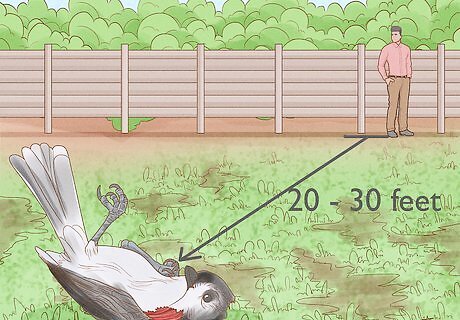
Watch the bird from a distance. Stay about 20 to 30 feet (6.1 to 9.1 m) away and monitor the bird for a few minutes. If they're able to hop and move around, they probably don't need your help. Rehabilitation is a difficult process that is rarely successful. It's usually best to let the bird manage on their own.

Try to work out the approximate life stage of the bird. If the bird has feathers, it's safe to assume they're either an adult or a fledgling, regardless of their size. If you see a baby bird without feathers on the ground, pick them up and return them to their nest if you can. Warm them in your hands if they feel cold, and don't worry—bird parents won't abandon or kill the baby because of your scent. A young bird isn't necessarily injured just because they're on the ground. Bird parents often leave their young alone between feedings on purpose so they don't draw attention to them and attract predators. Check for signs of injury before you disturb a fledgling. If you return a nestling to the nest, continue to observe the area and see if the parents come back. If the parents don't return, contact a local wildlife rehabilitator. If you've determined that the bird is at least a fledgling (or older) continue on with the rest of the guide.
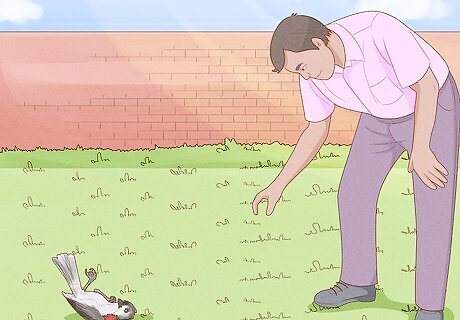
Walk slowly and quietly toward the bird to see if it flies away. Wild birds typically don't want to be close to humans and will fly away if they can. Keep your steps slow and deliberate—running or moving erratically could startle the bird. If the bird tries to fly away but is having difficulty, or if they try to hop away on the ground, it's best to leave them be. Don't try to chase them—you'll only stress them out.

Look for signs of serious injury. Blood or open wounds are the first sign that the bird is seriously injured. Beyond that, you might notice that one of the bird's wings is drooping compared to the other, or that one of its legs is broken. If the bird has a serious injury and can't stand or fly, they could probably use your help! Touch them as little as possible to avoid startling or threatening them—the poor creature is likely already terrified.
Protecting the Bird

Get a sturdy cardboard box with a lid to protect the bird. For small songbirds, a shoebox is usually perfect. Line the bottom with paper towels or an old T-shirt, then roll up some more paper towels or another T-shirt into a doughnut shape to create a little nest. Even though adult birds don't use nests, an injured bird will probably appreciate the security it provides. For larger birds, use a secure pet carrier lined with newspaper or paper towels. Hang a T-shirt over the wire door to protect the bird's feathers and keep it dark inside. Don't use a towel or anything made out of terry cloth—the bird can snag its claws or beak on the loops of the fabric.
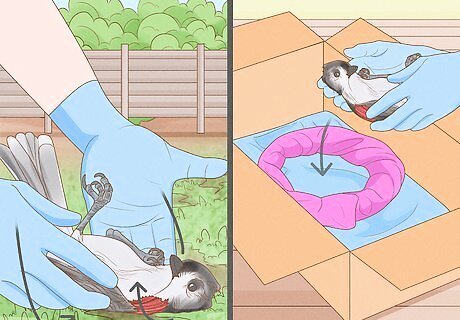
Pick up the bird carefully and place it in the box. Move slowly and deliberately to firmly grab the bird by the shoulders. This will pin the bird's wings to its side, as they would be while the bird was at rest. Cup your other hand under the bird so its feet can rest on your palm. Then, gently lay the bird down in the box. Wear thick work or utility gloves if possible to protect your hands. An injured bird can still hurt you. Wash your hands after touching the bird to prevent the spread of diseases or parasites (even if you were wearing gloves).
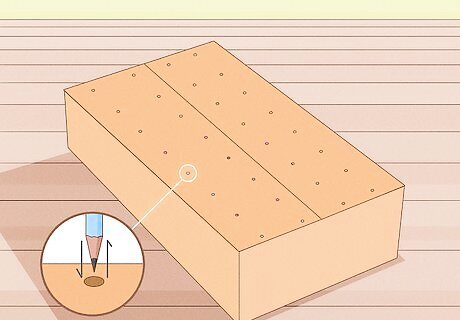
Cover the box with a lid. Poke a few holes in the lid of the box, about the diameter of a regular pencil. Once you've closed the lid, leave the bird alone. Don't keep opening and closing the lid every few minutes.
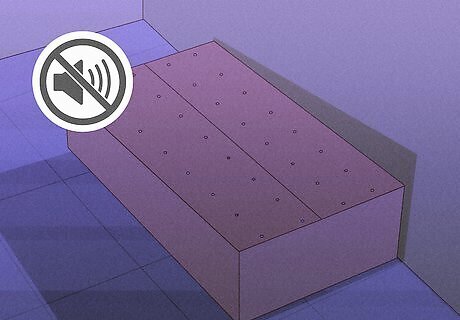
Leave the box in a dark, quiet place for an hour or two. Birds are easily startled by loud noises, so an injured bird definitely needs peace and quiet. If you take the box inside, put it in a small room away from any activity and close the door. Do not give food or water to the bird. Birds can drown in even the most shallow water dish, especially if they're injured. If you have a heating pad, set it on its lowest setting and place it under part of the box. This will help keep the bird warm.
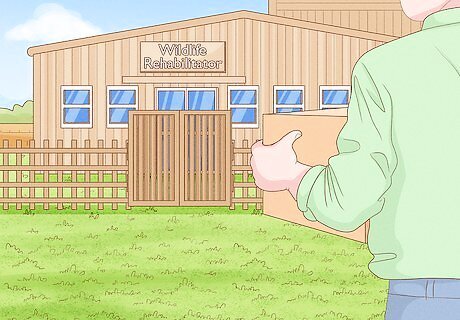
Transport the bird to a licensed wildlife rehabilitator. Call around until you find a wildlife rehabilitator who's willing to take the bird off of your hands. They may come and get the bird, but usually, you'll need to drive the bird to them. Set the box flat on the seat and keep your car quiet as you drive. It's usually best to turn the air conditioner off. But if it's too hot in the car without it, just make sure none of the vents are blowing directly on the box. Don't bring your kids with you unless you absolutely have to. Tell them to keep quiet and have them sit away from the bird if possible. For example, if you have the bird in the front passenger seat, have the kids sit in the backseat.
Contacting a Wildlife Rehabilitator
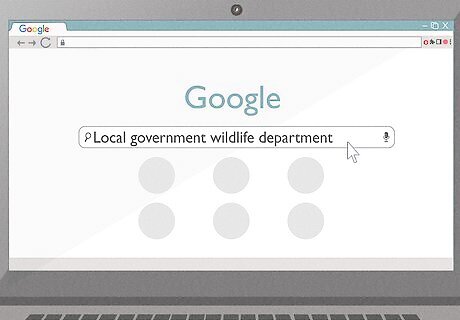
Your local government wildlife department Government wildlife departments typically have a hotline to call if you come across abandoned or injured wildlife. They likely also have a list of local wildlife rehabilitators you can call. Search online for the word "wildlife" along with the name of the area where you live, then click on a government site.
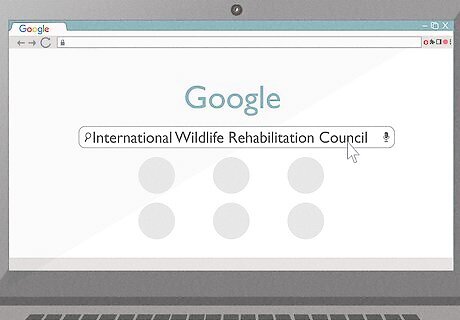
International Wildlife Rehabilitation Council The IWRC is a nonprofit organization that serves as a network for licensed wildlife rehabilitators around the globe to network and provide their services to wild animals in need of help. Simply click on your continent from their emergency resources page to find a list of rehabilitators along with their contact information.
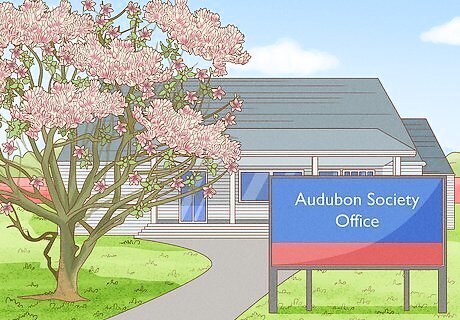
Your local Audubon Society office (US only) While the Audubon Society doesn't rehabilitate injured birds, they often have a directory of local rehabilitators who specialize in birds. Their website includes a directory of field offices, which can point you to local wildlife centers or veterinarians who have experience with wildlife.
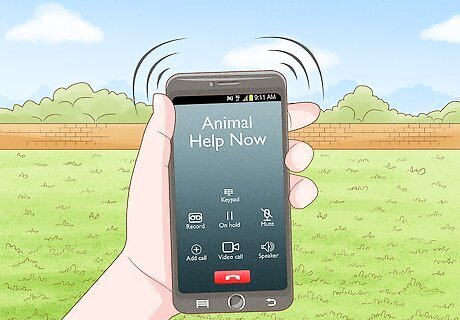
Animal Help Now (US only) Animal Help Now is a network of wildlife hotlines, wildlife agencies, veterinarians who accept wildlife, and other licensed wildlife rehabilitators who can respond to a wildlife emergency. Just enter your city, state, or ZIP code on their emergency page to pull up local contact information.

National Wildlife Rehabilitators Association (US only) This professional association for licensed wildlife rehabilitators in the US can connect you with a member of the association near you. They also have other resources available on their website that might be able to help you find an individual rehabilitator or organization locally who can answer your questions or provide further assistance with the injured bird.
Feeding or Watering the Bird in Emergencies
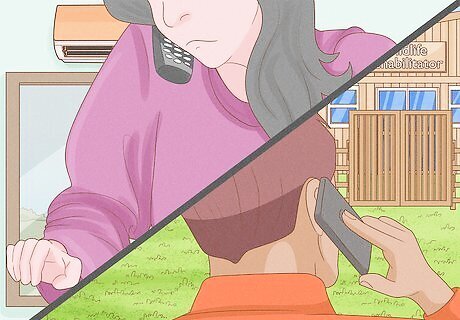
Talk to a licensed wildlife rehabilitator first and get their advice. In some cases, it might not be possible to get the baby bird into an expert quickly enough. If you're worried about this, call in for help. A wildlife rehabilitator might give you instructions on how to care for the bird, depending on the information you've provided. Wild birds have different diets depending on the species, so it's best to speak to a professional to get specific advice (and not to feed the bird unless you're directed to). Different species have totally different food needs. However, a professional might suggest that you try blended dry/wet dog or cat food, as this can feed a wide range of baby bird species.
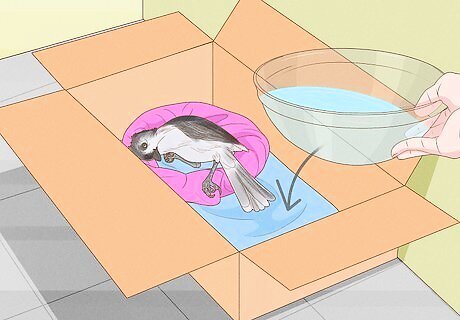
Provide a shallow dish of water in the box if you have to hold the bird. Most wildlife rehabilitators are volunteers, so it could be you can't find someone local who can take care of the bird immediately. If you need to hold them for several hours, place a small dish in the box with a very small amount of water—just a few drops, really. The bird will drink if they need to. Take the water dish out of the box before you transport the bird to the wildlife rehabilitator. If it sloshes around, an immobile bird could drown in even a small amount of water.
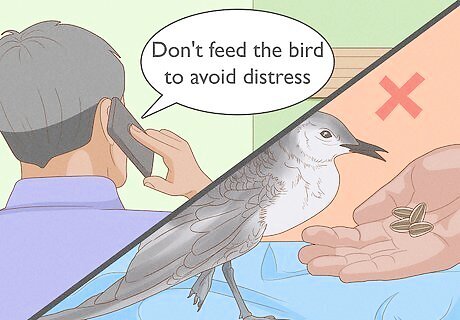
Follow the rehabilitator's advice closely. Don't jump into action without advice if you can't reach a professional immediately—the bird isn't going to starve if they don't eat for a few hours. Just keep trying the line! Good intentions can unfortunately prolong the bird's distress. Never try to force-feed an injured bird—you could cause it even more harm.




















Comments
0 comment